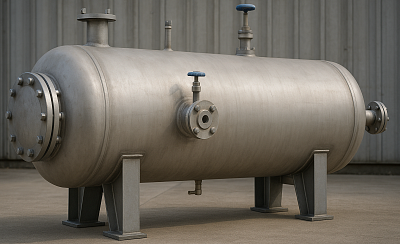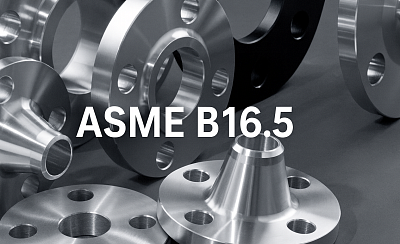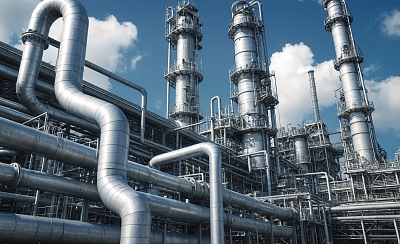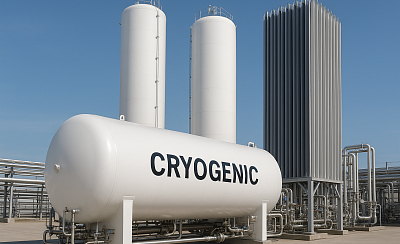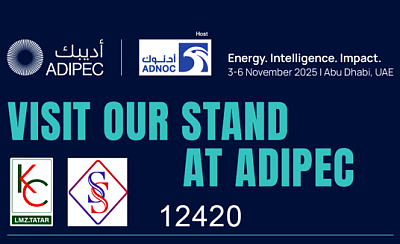
Inconel 625 - The Metal That Can Withstand Anything
In modern high-tech industries, there is an increasing demand for materials that can operate reliably under extreme conditions — at high temperatures, in aggressive corrosive environments, and under significant mechanical loads. One such material is Inconel 625 — a nickel-chromium-molybdenum superalloy designed specifically for situations where conventional steels fail. Thanks to its combination of high strength, exceptional corrosion resistance, and good manufacturability, Inconel 625 is widely used in aerospace, oil and gas, chemical, marine, and energy industries. Features of Inconel 625 Inconel 625 is a superalloy known for its high corrosion resistance and strength at temperatures up to 982 °C. It is classified under UNS N06625 and W.Nr. 2.4856, and is regarded as one of the most reliable materials for service in aggressive and high-temperature environments. Importance in Industry The unique properties of Inconel 625 allow it to maintain both strength and corrosion resistance even under extreme conditions. This reduces maintenance costs, improves safety, and extends the service life of critical components — a crucial factor in industries where reliability is paramount. Oil and Gas Industry: Inconel 625 is used in pipelines, heat exchangers, valves, and drilling equipment. It resists hydrogen sulfide, seawater, and acidic environments typical of wells and refining systems. Chemical and Energy Sectors: Applied in reactors, heat exchangers, evaporators, and waste-recovery systems, it withstands acids and alkalis at elevated temperatures. Marine Engineering: Used in components exposed to seawater — such as exhaust systems, riser sheathing, and piping — due to its outstanding resistance to corrosion and biofouling. Aerospace Industry: Utilized for engine parts, exhaust systems, turbine rings, and fasteners that must operate under high temperatures and vibration loads. Nuclear and Environmental Technologies: Suitable for reactor components, emission control systems, flue liners, and waste-processing equipment thanks to its resistance to radiation and corrosion. Chemical Composition of Inconel 625 Ni (Nickel): ≈ 58 % Cr (Chromium): 20–23 % Mo (Molybdenum): 8–10 % Nb + Ta (Niobium + Tantalum): 3.15–4.15 % Fe (Iron): ≤ 5 %, plus trace amounts of Mn, Si, Ti, Al, and C This balanced composition provides exceptional strength and corrosion resistance. Nickel forms a stable base; chromium and molybdenum enhance resistance to aggressive environments, while niobium increases strength without the need for precipitation-hardening treatments. Key Properties of Inconel 625 1. Corrosion Resistance Inconel 625 resists: pitting and crevice corrosion; attack by chlorides and acids (sulfuric, nitric, phosphoric); intergranular corrosion and stress-corrosion cracking. It performs equally well in oxidizing and reducing environments, making it ideal for chemical plants, offshore systems, and oil-and-gas applications. 2. High-Temperature Strength Alloying with molybdenum and niobium allows Inconel 625 to retain its mechanical strength up to 982 °C. These elements distort the crystal lattice, reducing creep and enhancing resistance to long-term deformation. 3. Resistance to Thermal Fatigue and Oxidation The alloy withstands repeated heating and cooling without scaling or cracking. Its surface forms a dense oxide film that protects it from high-temperature degradation. 4. Fabrication and Welding Inconel 625 can be welded by all major methods (TIG, MIG, arc welding) without pre- or post-heat treatment. This lowers production costs and simplifies the manufacture of complex components. It also exhibits excellent hot- and cold-workability. Mechanical Characteristics Density: 8.44 g/cm³ Melting range: 1290–1350 °C Ultimate tensile strength: up to 930 MPa Yield strength: ≈ 420 MPa Elongation: 30–35 % How Inconel 625 Differs from Stainless Steel Inconel 625 is a nickel-based superalloy engineered for extreme conditions, whereas stainless steel is a more general-purpose iron-based material. Inconel 625 maintains its structural integrity and strength at nearly 1000 °C, while even high-grade stainless steels begin to lose strength at 800–850 °C. For this reason, Inconel is used in zones of intense heat and chemical exposure — such as engines, reactors, and offshore installations. Another key distinction is long-term durability: Inconel 625 is highly resistant to creep and cracking, while steels gradually deform and weaken under cyclic heating. This makes Inconel the preferred choice for critical systems where repair or failure is unacceptable. Although it is more expensive due to its nickel content and complex production, its reliability and longevity justify the cost. Stainless steel, in contrast, remains the economical solution for general applications where temperatures and chemical stress are moderate. Conclusion Inconel 625 is among the most reliable nickel-based superalloys available today. It combines strength, corrosion resistance, thermal stability, and ease of fabrication — qualities that have made it a standard material for demanding environments in aerospace, oil and gas, chemical processing, and marine engineering. Where ordinary steel loses its properties, Inconel 625 keeps performing — and that’s what makes it a cornerstone material for the technologies of the future.
More
